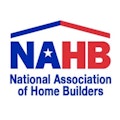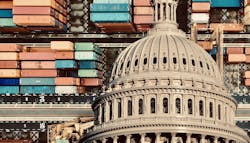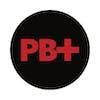How Will Home Builders Navigate Trump's Tariffs?
This article first appeared in the March/April 2025 issue of Pro Builder.
President Trump’s stop-and-start process on proposed tariffs has roiled markets and resulted in uncertainty in the business community about the effect of such tariffs, if and when they go into effect. The housing industry, in particular, will see higher prices for key building materials if the U.S. imposes most of the tariffs the president has proposed for goods from Canada, China, and Mexico.
Which Building Materials Are Affected by Trump's Tariffs
Canada and Mexico, respectively, are important sources of softwood lumber and gypsum (used in drywall). China is an important source of steel and aluminum, as well as a supplier of home appliances and other products used in residential construction.
Many of the raw materials and goods sourced from China are already subject to tariffs, including Section 301 (for violation of trade agreements) and Section 232 tariffs (imposed to protect national security).
It is important to note that Canada, Mexico, and China are the United States’ three largest trading partners. Economists at the National Association of Home Builders (NAHB) project that the proposed new tariffs on Mexico and Canada, along with the recently imposed tariffs on China, could raise the cost of imported construction materials by more than $3 billion.
Home Builders' Response to the Latest Tariffs
NAHB is hearing anecdotal reports from members that they are anticipating tariffs will increase material costs between $7,500 and $10,000 on the average new single-family home. NAHB will be surveying members to better gauge real-world impacts as suppliers adjust prices in response to proposed or imposed tariffs.
RELATED
- NAHB Discusses Tariffs and Their Potential Impact on Home Builders
- How Trump’s Tariffs Will Affect the Construction Industry
- New Tariffs to Create More Uncertainty in the Housing Market
On March 12, Trump imposed global tariffs of 25% on steel and aluminum imports. And as of March 21, the administration was proposing 25% tariffs on Canadian products, including softwood lumber critical to the U.S. home building industry. That would be on top of the existing 14.5% lumber tariffs previously imposed by the U.S. Department of Commerce. Adding the new tariff to the existing duties means tariffs on Canadian lumber could surge to as much as 39.5%. To make matters worse, the Commerce Department has signaled it plans to roughly double the 14.5% tariff rate later this year, possibly in September. If all of the proposed tariffs go into effect, then the total tariff rate on Canadian softwood lumber could rise above 50% in the fall.
Tariff Basics
Amid all of the talk about tariffs, it's important to keep in mind what a tariff is and does. It is essentially a tax on an imported good, meaning the importer pays an additional cost for importing such an item from another country. This effectively raises the price of imported products, and the price increase is typically either absorbed by the importer or is passed on to the end consumer of the good.
For most goods, the cost is passed on to end users, meaning consumers. In the case of housing, tariffs on building materials will likely mean consumers will end up paying for the tariffs in the form of higher home prices.
And with Canada, Mexico, and China saying they will retaliate with their own tariffs, economists warn that trade wars can have unintended consequences, including the possibility of higher prices and rising inflation on an international scale.
Adding more uncertainty, the president has pledged to impose reciprocal tariffs on all nations. This means that whatever countries charge in tariffs on goods from the U.S., the U.S. will respond in kind.
NAHB Pushes Back
NAHB has been pushing back on tariffs for many years because tariffs act as a tax on American builders and homebuyers and, ultimately, drive up the cost of housing.
NAHB chairman Buddy Hughes met with U.S. Trade Representative senior staff in early March to discuss how tariffs on building materials will drive up home building costs. Hughes asked that Canadian lumber be exempt from immediate tariff increases.
In February, senior NAHB staff met with Quebec Premier Francois Legault and other top Canadian officials. NAHB supports Canadian efforts to reach an equitable new trade agreement between the two nations that would eliminate tariffs.
In addition, shortly after Trump assumed the presidency, NAHB sent a letter to the White House urging the administration to exempt critical building materials from his proposed 25% tariffs on Canadian and Mexican goods.
NAHB is encouraged by the Trump administration's efforts to remove barriers to domestic lumber production to reduce U.S. reliance on lumber imports and meet home builders’ demand. The U.S. currently imports roughly 30% of the softwood lumber the nation uses because there is not enough domestic capacity to meet demand.
Looking ahead, NAHB will continue to work with all relevant stakeholders to roll back tariffs and encourage efforts to responsibly increase domestic timber and sawmill production to fix building material supply chains and bring down costs.
About the Author

National Association of Home Builders
The National Association of Home Builders (NAHB) is a Washington, D.C.-based trade association representing more than 140,000 members involved in home building, remodeling, multifamily construction, property management, subcontracting, design, housing finance, building product manufacturing, and other aspects of residential and light commercial construction. For more, visit nahb.org. Facebook.com/NAHBhome, Twitter.com/NAHBhome

